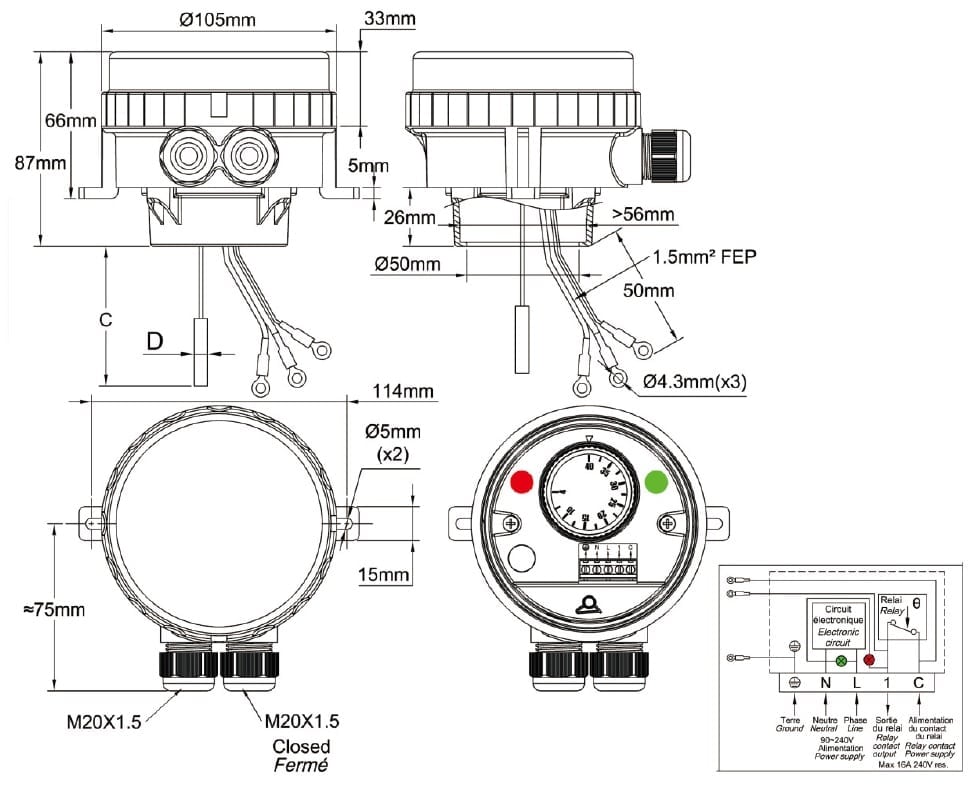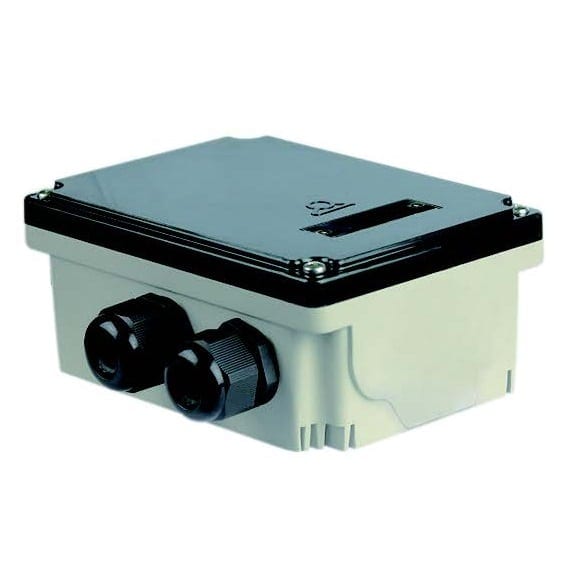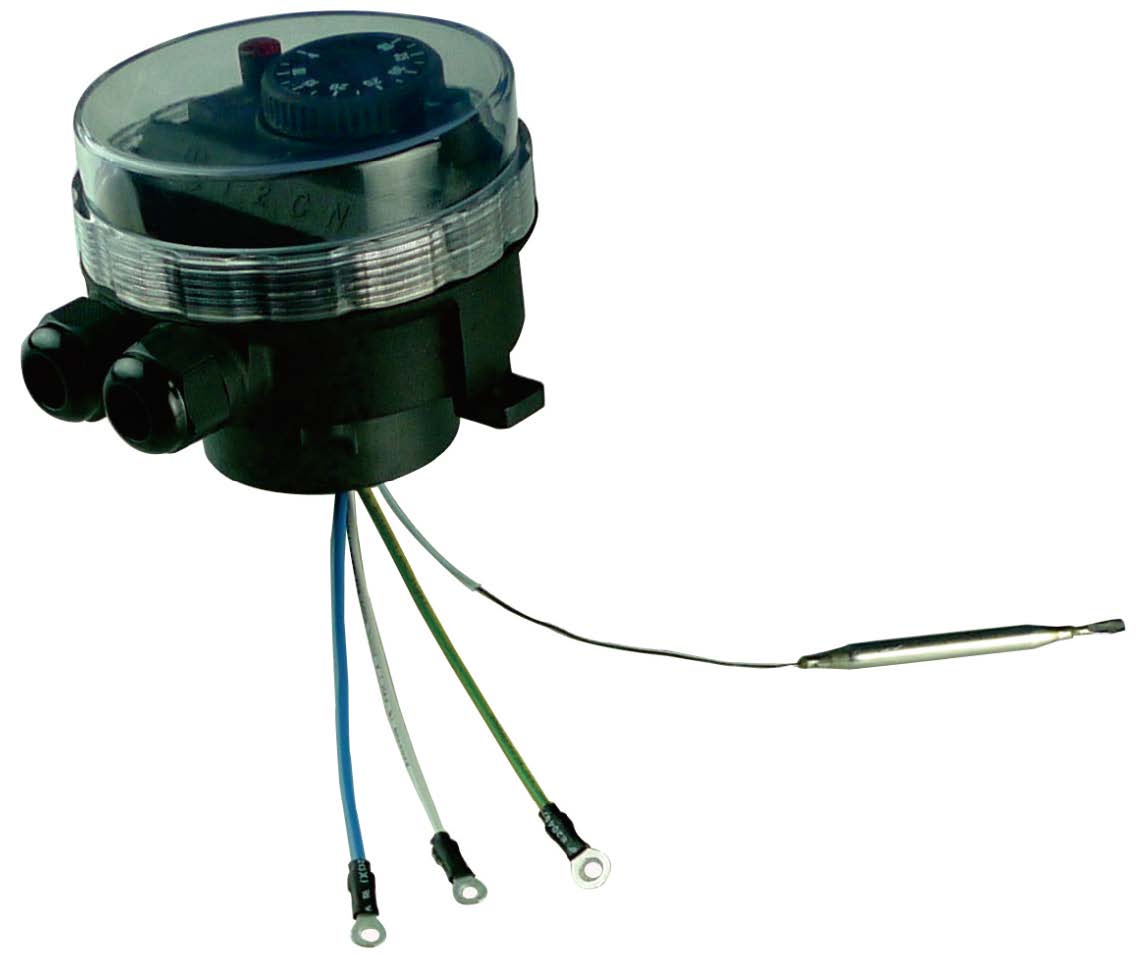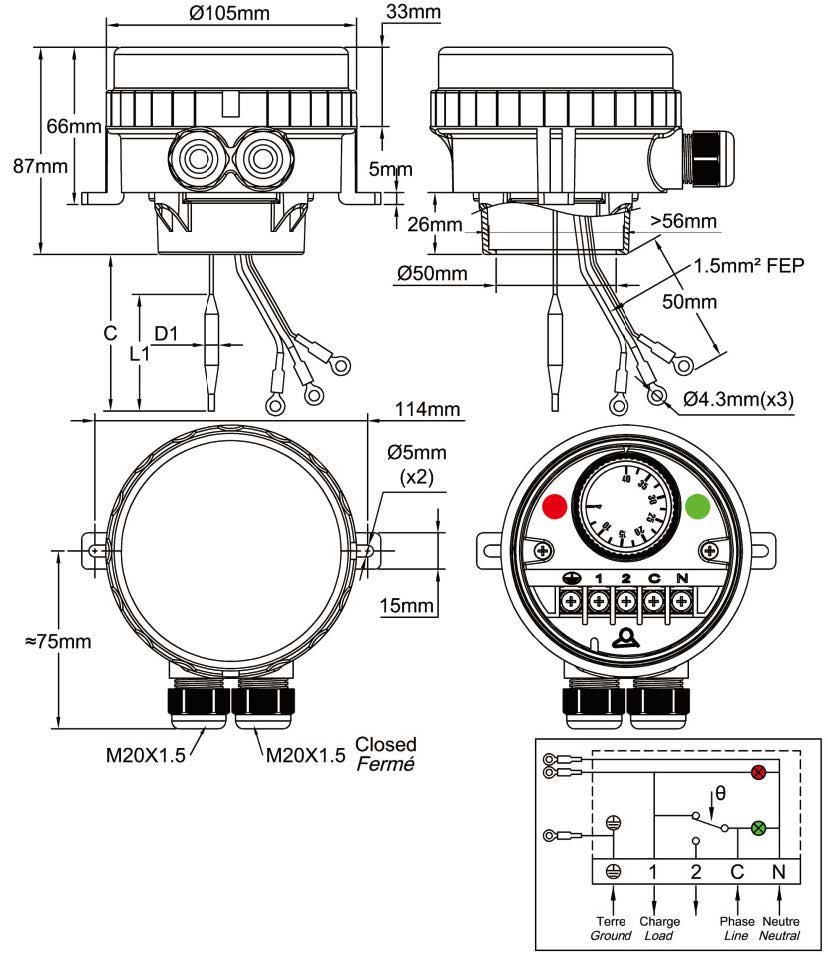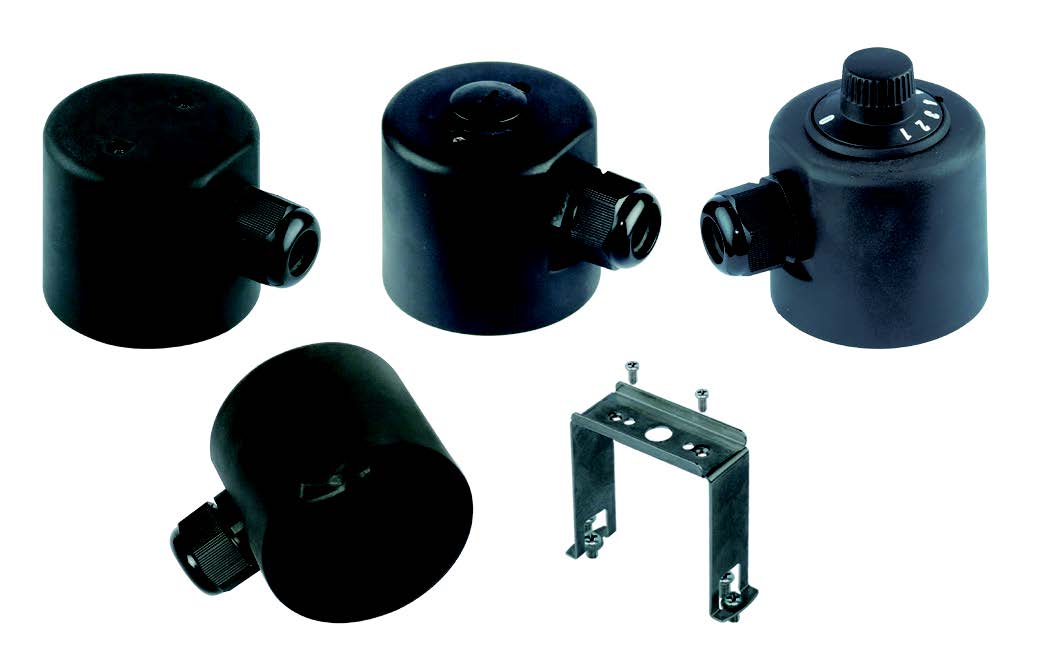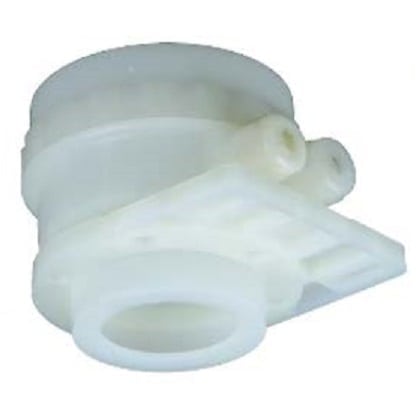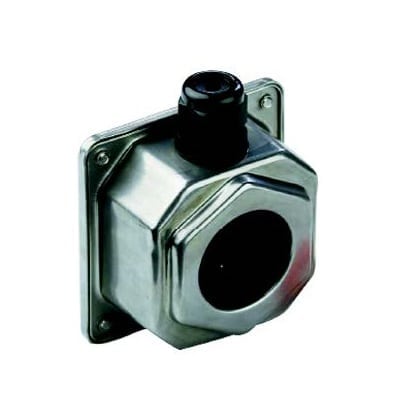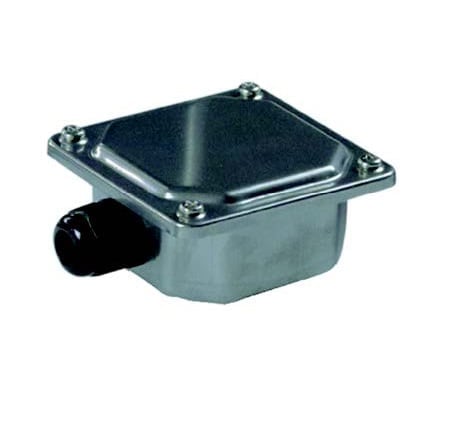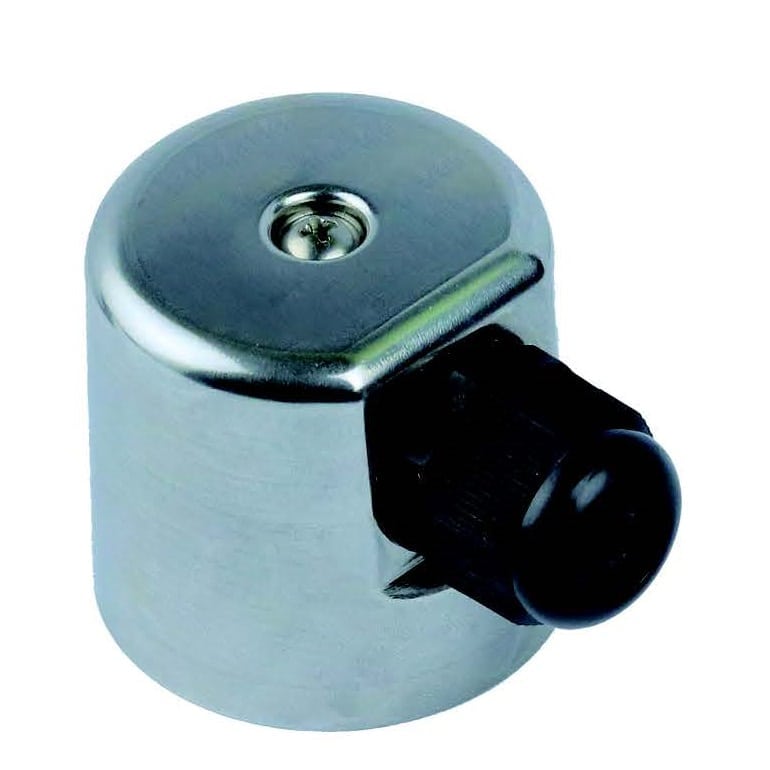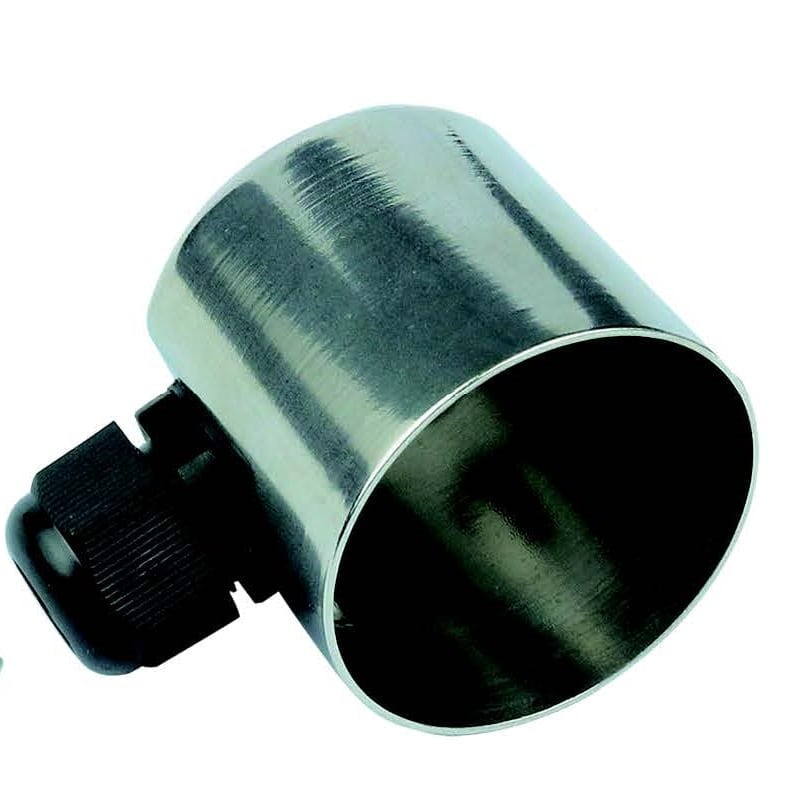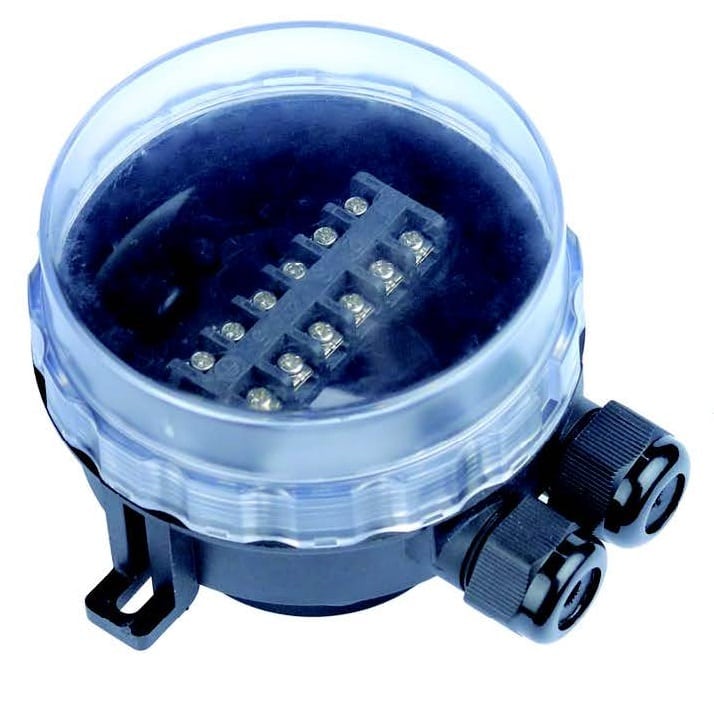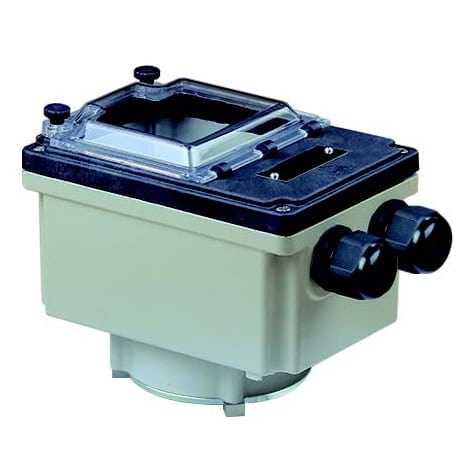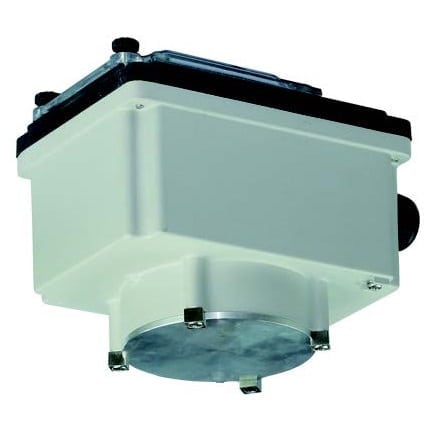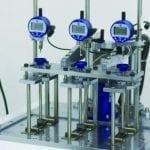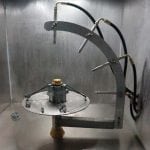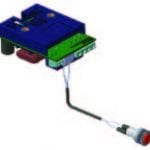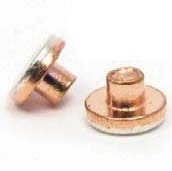Electronic thermostat for immersion heater IP66, IK10
-Equipment requesting a very strong resistance to water ingress. The transparent cover allows to visualize the set point and the 2 pilot lights
Fully wired sub assembly for direct mounting on immersion heater elements, 1”1/2 or M45x2 with double thread or rotation ring. Applications in usual industrial applications and environments, non-hazardous areas.
-Very small differential
| Housing raw material | |
|---|---|
| Color | |
| Ingress protection | |
| Mechanical protection | |
| Contact style | |
| Electrical rating | |
| Voltage | |
| Electrical life (cycles at rated value) | |
| Measurement type | |
| Sensing element | |
| Differential (°C) | |
| Setting adjustment |
| Enclosure | Type | Operation | Contact | Measurement | Ranges °C | Models |
| IP66, IK10 | Control | Electronic | SPNC | Immersion heater | 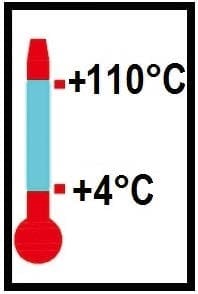 |
YF82NC |
|
Material |
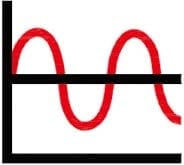 |
 |
 |
 |
||
|
PA66 & PC |
-Equipment requesting a very strong resistance to water ingress. The transparent cover allows to visualize the set point and the 2 pilot lights
Fully wired sub assembly for direct mounting on immersion heater elements, 1”1/2 or M45x2 with double thread or rotation ring. Applications in usual industrial applications and environments, non-hazardous areas.
-Very small differential
Housing: Protection class IP 66 upon EN 60529 (waterproof spray water under high pressure and sea splashes, totally dust tight). Body in black PA66, fiber glass reinforced. The transparent polycarbonate cover can be unscrewed by hand, but it is also possible to use a hook spanner. A removable adapter is screwed at the bottom of the enclosure. It fits the usual immersion heater fittings.
Mechanical impact resistance : IK10. High UV resistance.
Set point adjustment: By °C printed knob. All types have an adjustable rotation limit system located inside the knob that allows reducing the set point adjustment span. °F printed knobs available in option
Operation: Microprocessor electronic thermostat, on-off action .
Set point adjustment ranges: 4-40°C (40-105°F); 30-90°C (85-195°F); 30-110°C (85-230°F).
Differential: Differential is preset at the minimum value, but can be increased with a potentiometer located under the set point adjustment knob.
Sensing element: The 5x 30mm NTC sensor (10KOhms @25°C) goes out by the bottom of the enclosure to fit in the immersion heater pocket.
Pilot lights: One pilot light visualizes the thermostat contact output position. The other visualizes the power supply input. Phase and line 230V power supply is mandatory for these pilot lights.
Cable input and output: Two M20 cable glands, built-in black PA66. One of them is closed.
Electrical connections: Inside, on screw terminal connection block.
Earthing: Internal screw terminal and 1.5mm² FEP insulated wire with round hole terminals for the immersion heater.
Mounting: By the immersion heater thread or by 2 legs with holes for screws dia. 4 to 5 mm, 114 mm distance
Identification: Identification label on backside.
Contact: SPNC. 16A (2.6), 250VAC. Contact open on temperature rise
Electrical life: >100.000 cycles.
Minimum storage temperature: -35°C (-30°F)
Maximum ambient temperature: 60°C (140°F)
For more technical information ask 2PE2N6 thermostat technical data sheet
Main references
| Temperature adjustment ranges
°C (°F) |
References with SPNC contact, open on temperature rise | NTC sensor cable length (C, mm) | Minimum differential °C (°F) |
| 4-40°C (40-105°F) | YF82NC04040118UJ | 110 | 0,5~0,8°C (0.9~1.4°F) |
| 4-40°C (40-105°F) | YF82NC04040178UJ | 170 | 0,5~0,8°C (0.9~1.4°F) |
| 4-40°C (40-105°F) | YF82NC04040238UJ | 230 | 0,5~0,8°C (0.9~1.4°F) |
| 4-40°C (40-105°F) | YF82NC04040308UJ | 300 | 0,5~0,8°C (0.9~1.4°F) |
| 4-40°C (40-105°F) | YF82NC04040458UJ | 450 | 0,5~0,8°C (0.9~1.4°F) |
| 4-40°C (40-105°F) | YF82NC04040608UJ | 600 | 0,5~0,8°C (0.9~1.4°F) |
| 30-90°C (85-195°F) | YF82NC30090118UJ | 110 | 0,5~0,8°C (0.9~1.4°F) |
| 30-90°C (85-195°F) | YF82NC30090178UJ | 170 | 0,5~0,8°C (0.9~1.4°F) |
| 30-90°C (85-195°F) | YF82NC30090238UJ | 230 | 0,5~0,8°C (0.9~1.4°F) |
| 30-90°C (85-195°F) | YF82NC30090308UJ | 300 | 0,5~0,8°C (0.9~1.4°F) |
| 30-90°C (85-195°F) | YF82NC30090458UJ | 450 | 0,5~0,8°C (0.9~1.4°F) |
| 30-90°C (85-195°F) | YF82NC30090608UJ | 600 | 0,5~0,8°C (0.9~1.4°F) |
| 30-110°C (85-230°F) | YF82NC30110118UJ | 110 | 0,5~0,8°C (0.9~1.4°F) |
| 30-110°C (85-230°F) | YF82NC30110178UJ | 170 | 0,5~0,8°C (0.9~1.4°F) |
| 30-110°C (85-230°F) | YF82NC30110238UJ | 230 | 0,5~0,8°C (0.9~1.4°F) |
| 30-110°C (85-230°F) | YF82NC30110308UJ | 300 | 0,5~0,8°C (0.9~1.4°F) |
| 30-110°C (85-230°F) | YF82NC30110458UJ | 450 | 0,5~0,8°C (0.9~1.4°F) |
| 30-110°C (85-230°F) | YF82NC30110608UJ | 600 | 0,5~0,8°C (0.9~1.4°F) |
Downloadable
Datasheets
Related products
Immersion heater temperature control boxes
Plastic housings
Simplified round enclosure for 2”1/2 and M77x2 fittings, Y3C3
Metallic housings
Metallic housings
Plastic housings
Immersion heater enclosure with extension, in PA66 and PC Y3F3
Technical informations associated to this product
-
Main properties of plastic raw materials used for enclosures
The classic housings, with only 5 sides and a lid, require a long and costly layout, most of the time ignoring the application needs: security, fire resistance, water penetration, shocks, UV, temperature, etc. -
Electrical protection classes
The housings are designed to protect electrical equipment located inside. This protection must be considered in the electrical and environmental angles.) -
Thermostats installation
The proper functioning of a thermostat depends primarily on the correct choice of the component, but also the conditions of its installation. Conditions used to calibrate regulating and control equipment in the factory are always ideal laboratory conditions, ensuring measurement accuracy and repeatability. These conditions are rarely those found in practice when installing thermostats. However, with a minimum of constraints, it is possible to optimize assemblies. -
Electrical contacts
As numerous mechanisms exist, we decided not to distinguish on the basis of constructive technique, but according to their operation speed, which is the key element.


